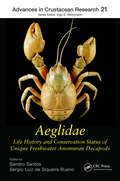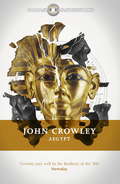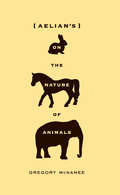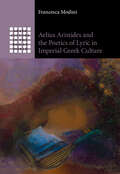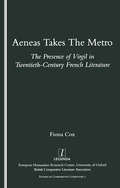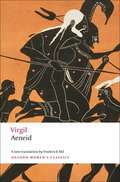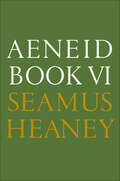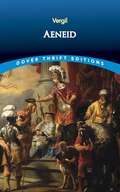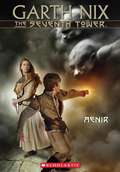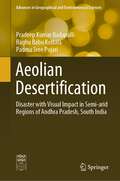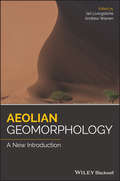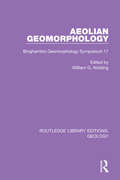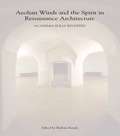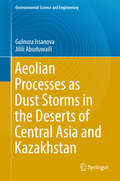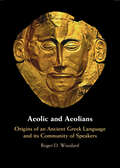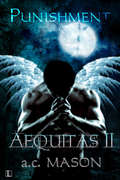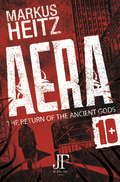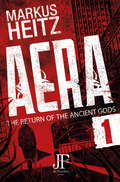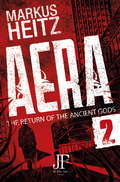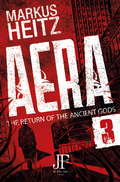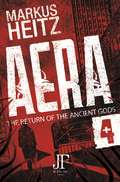- Table View
- List View
Aeglidae: Life History and Conservation Status of Unique Freshwater Anomuran Decapods (Advances in Crustacean Research #19)
by Sandro Santos Sergio Luiz de Siqueria BuenoAeglidae focuses on these unique crustaceans who are endemic to South America. The book is the first to summarize the diverse aspects of the Aeglidae, whose taxonomic features and phylogenetic relationships, evolutionary history and biogeographical background, biological characteristics, and current conservation awareness make them stand out among all other decapods. Addresses the morphology, taxonomy, and phylogenetics that characterize the Aegla and their relationship to other decapod taxa Provides in-depth treatment of the evolutionary history, biogeography, reproduction, developmental biology, and the life cycle of the Aeglidae Discusses their physiology, ecology and behavior, including physiological mechanisms associated with freshwater adaptation, population dynamics, trophic ecology, agonistic and non-agonistic behavior Covers the current conservation status of all known species of aeglids, major threats to them, the use of aeglids as flagships or umbrella species, and conservation action planning Edited by internationally distinguished leaders in this field. This will be an important reference not only for carcinologists working with this family of decapods, but also readers interested in the evolution, biogeography, taxonomy, phylogenetics, physiology, and reproductive ecology.
Aegypt: Book Three Of The Aegypt Cycle (FANTASY MASTERWORKS #3)
by John CrowleyThere is more than one history of the world. Before science defined the modern age, other powers, wondrous and magical, once governed the universe, their lore perfected within a lost capital of hieroglyphs, wizard-kings, and fabulous monuments. In the 1970s, a historian named Pierce Moffett moves to the New England countryside to write a book about Ægypt, driven by an idea he dare not believe: that the physical laws of the universe once changed and may change again. Yet the notion is not his alone. Something waits at the locked estate of Fellowes Kraft, author of romances about Will Shakespeare and Giordano Bruno and Dr. John Dee, something for which Pierce and those near him have long sought without knowing it: a key, perhaps, to Ægypt ...
Aelian's On the Nature of Animals
by Gregory McnameeNot much can be said with certainty about the life of Claudius Aelianus, known to us as Aelian. He was born sometime between A.D. 165 and 170 in the hill town of Praeneste, what is now Palestrina, about twenty-five miles from Rome, Italy. He grew up speaking that town's version of Latin, a dialect that other speakers of the language seem to have found curious, but-somewhat unusually for his generation, though not for Romans of earlier times-he preferred to communicate in Greek. Trained by a sophist named Pausanias of Caesarea, Aelian was known in his time for a work called Indictment of the Effeminate, an attack on the recently deceased emperor Marcus Aurelius Antoninus, who was nasty even by the standards of Imperial Rome. He was also fond of making almanac-like collections, only fragments of which survive, devoted to odd topics such as manifestations of the divine and the workings of the supernatural.His De Natura Animalium (On the Nature of Animals) has a similar patchwork quality, but it was esteemed enough in his time to survive more or less whole, and it is about all that we know of Aelian's work today. A mostly randomly ordered collection of stories that he found interesting enough to relate about animals-whether or not he believed them-Aelian's book constitutes an early encyclopedia of animal behavior, affording unparalleled insight into what ancient Romans knew about and thought about animals-and, of particular interest to modern scholars, about animal minds.If the science is sometimes sketchy, the facts often fanciful, and the history sometimes suspect, it is clear enough that Aelian had a fine time assembling the material, which can be said, in the most general terms, to support the notion of a kind of intelligence in nature and that extends human qualities, for good and bad, to animals. His stories, which extend across the known world of Aelian's time, tend to be brief and to the point, and many return to a trenchant question: If animals can respect their elders and live honorably within their own tribes, why must humans be so appallingly awful?Aelian is as brisk, as entertaining, and as scholarly a writer as Pliny, the much better known Roman natural historian. That he is not better known is simply an accident: he has not been widely translated into English, or indeed any European language. This selection from his work will introduce readers to a lively mind and a witty writer who has much to tell us.
Aelian's On the Nature of Animals
by Gregory McnameeNot much can be said with certainty about the life of Claudius Aelianus, known to us as Aelian. He was born sometime between A.D. 165 and 170 in the hill town of Praeneste, what is now Palestrina, about twenty-five miles from Rome, Italy. He grew up speaking that town's version of Latin, a dialect that other speakers of the language seem to have found curious, but-somewhat unusually for his generation, though not for Romans of earlier times-he preferred to communicate in Greek. Trained by a sophist named Pausanias of Caesarea, Aelian was known in his time for a work called Indictment of the Effeminate, an attack on the recently deceased emperor Marcus Aurelius Antoninus, who was nasty even by the standards of Imperial Rome. He was also fond of making almanac-like collections, only fragments of which survive, devoted to odd topics such as manifestations of the divine and the workings of the supernatural.His De Natura Animalium (On the Nature of Animals) has a similar patchwork quality, but it was esteemed enough in his time to survive more or less whole, and it is about all that we know of Aelian's work today. A mostly randomly ordered collection of stories that he found interesting enough to relate about animals-whether or not he believed them-Aelian's book constitutes an early encyclopedia of animal behavior, affording unparalleled insight into what ancient Romans knew about and thought about animals-and, of particular interest to modern scholars, about animal minds.If the science is sometimes sketchy, the facts often fanciful, and the history sometimes suspect, it is clear enough that Aelian had a fine time assembling the material, which can be said, in the most general terms, to support the notion of a kind of intelligence in nature and that extends human qualities, for good and bad, to animals. His stories, which extend across the known world of Aelian's time, tend to be brief and to the point, and many return to a trenchant question: If animals can respect their elders and live honorably within their own tribes, why must humans be so appallingly awful?Aelian is as brisk, as entertaining, and as scholarly a writer as Pliny, the much better known Roman natural historian. That he is not better known is simply an accident: he has not been widely translated into English, or indeed any European language. This selection from his work will introduce readers to a lively mind and a witty writer who has much to tell us.
Aelius Aristides and the Poetics of Lyric in Imperial Greek Culture (Greek Culture in the Roman World)
by Francesca ModiniThis book is the first study of the persistence and significance of ancient lyric in imperial Greek culture. Redefining lyric reception as a phenomenon ranging from textual engagement with ancient poems to the appropriation of song traditions, Francesca Modini reconsiders the view of imperial culture (paideia) as dominated by Homer and fifth-century Attic literature. She argues that textual knowledge of lyric allowed imperial writers to show a more sophisticated level of paideia, and her analysis further reveals how lyric traditions mobilised distinctive discourses of self-fashioning, local identity, community-making and power crucial for Greeks under Rome. This is most evident in the works of Aelius Aristides, who reconfigured ancient lyric to shape his rhetorical persona and enhance his speeches to imperial communities. Exploring Aristides' lyric poetics also changes how we interpret his reconstruction of the classical tradition and his involvement in the complex politics of the Empire.
Aemilia Lanyer as Shakespeare’s Co-Author (Routledge Studies in Shakespeare)
by Mark BradbeerThis book presents original material which indicates that Aemilia Lanyer – female writer, feminist, and Shakespeare contemporary – is Shakespeare’s hidden and arguably most significant co-author. Once dismissed as the mere paramour of Shakespeare’s patron, Lord Hunsdon, she is demonstrated to be a most articulate forerunner of #MeToo fury. Building on previous research into the authorship of Shakespeare’s works, Bradbeer offers evidence in the form of three case studies which signal Aemilia’s collaboration with Shakespeare. The first case study matches the works of "George Wilkins" – who is currently credited as the co-author of the feminist Shakespeare play Pericles (1608) – with Aemilia Lanyer’s writing style, education, feminism and knowledge of Lord Hunsdon’s secret sexual life. The second case-study recognizes Titus Andronicus (1594), a play containing the characters Aemilius and Bassianus, to be a revision of the suppressed play Titus and Vespasian (1592), as authored by the unmarried pregnant Aemilia Bassano, as she then was. Lastly, it is argued that Shakespeare’s clowns, Bottom, Launce, Malvolio, Dromio, Dogberry, Jaques, and Moth, arise in her deeply personal war with the misogynist Thomas Nashe. Each case study reveals new aspects of Lanyer’s feminist activism and involvement in Shakespeare’s work, and allows for a deeper analysis and appreciation of the plays. This research will prove provocative to students and scholars of Shakespeare studies, English literature, literary history, and gender studies.
Aeneas Takes the Metro: The Presence of Virgil in Twentieth-century French Literature
by Fiona Cox"This study traces Virgil's journey through twentieth-century France by examining his profile in the works of Gide, Aragon, Valery, Pagnol, Klossowski, Butor, Simon and Pinget, and by looking at how their Virgilian appropriations complement and modify current readings of the ""Aeneid"" and other works. His presence in these works provides insights not only into modern French culture but into the Virgilian oeuvre itself. This process of mutual illumination is highlighted in Cox's argument by theories of intertextuality and dialogism. Although Virgil's presence in French literature is characterized by its focus on exile and uncertainty, Cox's study reaffirms the multivalency of this great European poet and his continuing relevance at the turn of the millennium."
Aeneid
by Frederick Ahl VirgilFrederick Ahl's new translation captures the excitement, poetic energy, and intellectual force of the original in a way that has never been done before. Ahl has used a version of Virgil's ancient hexameter, a swift-moving six-beat line varying between twelve and seventeen syllables, to reproduce the original poetry in a thrillingly accurate and engaging style. This is anAeneidthat the first-time reader can grasp and enjoy, and whose rendition of Virgil's subtleties of thought and language will enthrall those already familiar with the epic. Unlike most translators, Ahl has chosen to retain Virgil's word-play, the puns and anagrams and other instances of the poet's ebullient wit. "Like Shakespeare and the Greek tragedians, Virgil grasped that humor and earnestness are not mutually exclusive in art any more than they are in life. One should read theAeneidnot in solemn homage, but for enjoyment. " Enhanced by Elaine Fantham's Introduction, Ahl's comprehensive notes and an invaluable indexed glossary, this lively new translation brings readers closer to the original and the myriad enjoyments to be found there.
Aeneid Book VI: A New Verse Translation
by Seamus HeaneyA masterpiece from one of the greatest poets of the centuryIn a momentous publication, Seamus Heaney's translation of Book VI of the Aeneid, Virgil's epic poem composed sometime between 29 and 19 BC, follows the hero, Aeneas, on his descent into the underworld. In Stepping Stones, a book of interviews conducted by Dennis O'Driscoll, Heaney acknowledged the significance of the poem to his writing, noting that "there's one Virgilian journey that has indeed been a constant presence, and that is Aeneas's venture into the underworld. The motifs in Book VI have been in my head for years--the golden bough, Charon's barge, the quest to meet the shade of the father."In this new translation, Heaney employs the same deft handling of the original combined with the immediacy of language and sophisticated poetic voice as was on show in his translation of Beowulf, a reimagining which, in the words of James Wood, "created something imperishable and great that is stainless--stainless, because its force as poetry makes it untouchable by the claw of literalism: it lives singly, as an English language poem."
Aeneid: Aeneid, Book Viii: A Vocabulary And Test Papers; By Tutors Of University Correspondence College (classic Reprint) (Dover Thrift Editions: Poetry)
by VergilConsidered the greatest Roman poet, Vergil spent over a decade working on this monumental epic poem, which has been a source of literary inspiration and poetic grandeur for more than 2,000 years. Its twelve books tell the heroic story of Aeneas, a Trojan who escaped the burning ruins of Troy to found a new city in the west. This city, Lavinium, was the parent city of Rome.Drawn by divine destiny after the fall of Troy, Aeneas sailed westward toward the land of the Tiber. After many adventures, he and his men were shipwrecked on the shores of Carthage, where Aeneas and Queen Dido fell in love. Reminded of his duty, however, Aeneas sailed on. After visiting his father in the underworld, Aeneas saw the future of the Roman people and their exploits in peace and war. Eventually he arrived in Italy, where he and his men struggled valiantly to secure a foothold for the founding of Rome.Vast in scope, crowded with exciting adventure and heroic deeds, the Aeneid was Vergil's imagined account of Roman beginnings and a tribute to the history, character and achievements of the Roman people. On the other hand, its depth, vision and empathy with human suffering make the poem relevant to the general human condition. Now this enduring multileveled masterpiece is available in this republication of a standard unabridged translation, the most inexpensive complete version available.
Aeneid: Books Ix. , X (classic Reprint) (Hackett Classics)
by VirgilLong a master of the crafts of Homeric translation and of rhapsodic performance, Stanley Lombardo now turns to the quintessential epic of Roman antiquity, a work with deep roots in the Homeric tradition. With characteristic virtuosity, he delivers a rendering of the Aeneid as compelling as his groundbreaking translations of the Iliad and the Odyssey, yet one that--like the Aeneid itself--conveys a unique epic sensibility and a haunting artistry all its own.W. R. Johnson's Introduction makes an ideal companion to the translation, offering brilliant insight into the legend of Aeneas; the contrasting roles of the gods, fate, and fortune in Homeric versus Virgilian epic; the character of Aeneas as both wanderer and warrior; Aeneas' relationship to both his enemy Turnus and his lover Dido; the theme of doomed youths in the epic; and Virgil's relationship to the brutal history of Rome that he memorializes in his poem.A map, a Glossary of Names, a Translator's Preface, and Suggestions for Further Reading are also included.
Aenesidemus of Cnossus
by Roberto PolitoThis book provides the first edition of all testimonia on the Sceptic philosopher Aenesidemus of Cnossus, deemed to be the source of Sextus Empiricus, the main representative for us of ancient Scepticism. It will be an essential reference work for all those scholars and students dealing with the history of ancient Scepticism. It provides an extensive philosophical and historical commentary, and throws light on a series of questions concerning the philosophy of the late Academy, Stoic Heracliteanism, and the interaction between medicine and philosophy in the late Hellenistic era.
Aenir (The Seventh Tower, Book #3)
by Garth NixBook three of the series (for ages 9-12): The dream world Aenir is not a safe place. One wrong step can lead to danger, entrapment...or death. Tal and Milla must fight their way through this shifting landscape. They are searching for the Codex, a magical object that will decide the fate of their worlds. Many creatures stand in their way--from the cloud-flesh Storm Shepherds to a swarm of venomous Waspwyrms to a horrifying figure named Hazror. Tal and Milla cannot leave Aenir without the Codex. But finding it might endanger them more than they've ever dreamed...
Aeolian Desertification: Disaster with Visual Impact in Semi-arid Regions of Andhra Pradesh, South India (Advances in Geographical and Environmental Sciences)
by Pradeep Kumar Badapalli Raghu Babu Kottala Padma Sree PujariThis book summarizes contemporary research on land degradation, desertification, and how such issues relate to socioeconomic growth in developing countries. With a focus on local and regional levels, the book offers an in-depth analysis of aeolian action as a physical process, causes of land degradation, and desertification. The causes and effects of land degradation were investigated by utilizing multiscale and multidisciplinary methodologies, merging spatial socioeconomic data with remote sensing data, and using multiple levels and disciplinary approaches. The book also describes how to combine GIS with cutting-edge technologies such as remote sensing, geostatistics, scanning electron microscopy (SEM) and energy-dispersive X-ray (EDAX) analysis, and analytical hierarchy approaches, among others. Included is a thorough case study of the unusual but understudied semi-arid Anantapur district in Andhra Pradesh, South India. This book encourages the participation of all socioeconomic groups in decision-making and assists authorities and planners in developing suitable plans for the sustainable agricultural growth of an area. The book is an invaluable resource to comprehend and resolve issues about sustainable environmental planning and management.
Aeolian Geomorphology: A New Introduction (Zeitschrift Für Geomorphologie, Supplementbände Ser.)
by Ian Livingstone Andrew WarrenA revised introduction to aeolian geomorphology written by noted experts in the field The new, revised and updated edition of Aeolian Geomorphology offers a concise and highly accessible introduction to the subject. The text covers the topics of deserts and coastlines, as well as periglacial and planetary landforms. The authors review the range of aeolian characteristics that include soil erosion and its consequences, continental scale dust storms, sand dunes and loess. Aeolian Geomorphology explores the importance of aeolian processes in the past, and the application of knowledge about aeolian geomorphology in environmental management. The new edition includes contributions from eighteen experts from four continents. All the chapters demonstrate huge advances in observation, measurement and mathematical modelling. For example, the chapter on sand seas shows the impact of greatly enhanced and accessible remote sensing and the chapter on active dunes clearly demonstrates the impact of improvements in field techniques. Other examples reveal the power of greatly improved laboratory techniques. This important text: Offers a comprehensive review of aeolian geomorphology Contains contributions from an international panel of eighteen experts in the field Includes the results of the most recent research on the topic Filled with illustrative examples that demonstrate the advances in laboratory approaches Written for students and professionals in the field, Aeolian Geomorphology provides a comprehensive introduction to the topic in twelve new chapters with contributions from noted experts in the field.
Aeolian Geomorphology: Binghamton Geomorphology Symposium 17 (Routledge Library Editions: Geology #2)
by William G. NicklingThis book, first published in 1986, stems from the 1986 Binghamton Geomorphology Symposium. The topic was chosen because of the advances in the study of aeolian processes and landforms, particularly in the area of desertification, and the papers collected here clearly indicate that their study is not constrained by discipline boundaries but are of interest to geologists, physical geographers, soil scientists, meteorologists and engineers.
Aeolian Winds and the Spirit in Renaissance Architecture: Academia Eolia Revisited
by Barbara KendaWritten by scholars of international stature, Aeolian Winds and the Spirit in Renaissance Architecture presents studies of Renaissance pneumatology exploring the relationship between architecture and the disciplines of art and science. One of the principle goals of Renaissance architects was to augment the powers of pneuma so as to foster the art of well-being. Central to the study of pneumatic architecture are six Italian villas connected together by a ventilating system of caves and tunnels, including Eolia, in which Trento established an academic circle of scholars that included Palladio, Tazzo and Ruzzante. Picking up on current interest in environmental issues, Aeolian Winds and the Spirit in Renaissance Architecture reintroduces Renaissance perspectives on the key relationships in environmental issues between architecture and art and science. This beautifully illustrated and unprecedented study will illuminate the studies of any architecture or Renaissance student or scholar.
Aeolian proceses as Dust Storms in the Deserts of Central Asia and Kazakhstan (Environmental Science and Engineering)
by Gulnura Issanova Jilili AbuduwailiThis book highlights the aeolian processes in the desert zone of Kazakhstan and analyzes the current status of dust and sand storms in Central Asia and Kazakhstan. It also highlights the analyses, dynamics and long-term observations of storms on the basis of numerous cartographic materials and satellite images. Dust/sand storms are a common and important phenomenon in the arid and semi-arid regions of Kazakhstan, especially in its southern parts, where areas are covered by a great variety of deserts and offer a significant source of mineral and salt aerosols. The deserts of Kazakhstan mostly cover lowlands and extend from the eastern coast of the Caspian Sea to the piedmonts of the Tien-Shan Mountain. In Kazakhstan, desertification processes due to wind erosion in the form of dust/sand storms were observed in semi-desert and desert landscapes.
Aeolic and Aeolians: Origins of an Ancient Greek Language and its Community of Speakers
by Roger D. WoodardAeolic and Aeolians explores the origin of an ancient Greek language and the beginnings and evolution of the community of its speakers – the Aeolians. Roger Woodard argues that the starting point for both is situated in Asia Minor during the period of the Late Bronze Age, and that the ancestral Aeolic speech community can be identified with the Mycenaean peoples of Anatolia called the Ahhiyawans in Hittite records. These Bronze-Age Asian Greeks would intermarry with local Luvian peoples of western Anatolia, and the Aeolian language and identity – an identity encoded in myth-emerged from the intermixing of the two societies. Aeolian myths are central to Woodard's ground-breaking investigations presented in this volume. He demonstrates how assemblages of mythic components, what Lévi-Strauss called bricolage, enabled early Aeolians to give intellectual expression to their distinctive Greek identity. With the collapse of Bronze-Age societies in Mycenaean Greece, some of the early Aeolians of Anatolia would migrate to Europe, introducing their language and myths into Hellas.
Aequitas II Punishment: Punishment
by a.c. MasonWill the battle for aequitas freedom cost the balance between good and evil? Aequitas—part angel and demon, fight for their freedom and march to heaven's doorstep. Rebel leader Etienne Grant kidnaps his wife and vows to punish her disobedience. Once retribution is paid, Auria will command his army in a most ambitious venture—defeating all the angels in heaven. Auria can do nothing but surrender for the safety of her sons. Once in Grant's clutches, she realizes he wields an even greater whip as he fights for her heart and loyalty. Enemy alliances are forged as they prepare to bring down the Kingdom of God. But the archangels won't let victory slip from their grasp so easily. The battle for freedom might cost the balance between good and evil, but will it damn their souls for eternity?38,110 Words
Aera Book 10: The Return of the Ancient Gods (The Return of the Ancient Gods #10)
by Markus HeitzPart 10 and the final instalment in the fast-paced and thrilling new episodic novella series from award-winning Markus Heitz. The gods are back, the world is in uproar - and only one man will seek the truth.NOVEMBER, 2019I've never believed in any kind of god.But that's a problem when they start manifesting.It was a problem for everyone else too, especially those whose gods did not appear. We are divided, a fractured globe, because you'd question everything you'd believed, wouldn't you? Or would you fight?Because I don't think these really are the gods we've worshipped - Zeus, The Mórrígan, Thor, they can go to hell. We're in the middle of an invasion, and I'm the only one who believes in that reality.My name is Malleus Bourreau, I'm an atheist, an investigator, and I will find the answers.The tenth and final instalment in the ten-part novella serialisation 'The Return of the Ancient Gods' by award-winning author Markus Heitz.
Aera Book 1: The Return of the Ancient Gods (The Return of the Ancient Gods #1)
by Markus HeitzPart 1 in the fast-paced and thrilling new episodic novella series from award-winning Markus Heitz. NOVEMBER, 2019I've never believed in any kind of god.But that's a problem when they start manifesting.It was a problem for everyone else too, especially those whose gods did not appear. We are divided, a fractured globe, because you'd question everything you'd believed, wouldn't you? Or would you fight?Because I don't think these really are the gods we've worshipped - Zeus, The Mórrígan, Thor, they can go to hell. We're in the middle of an invasion, and I'm the only one who believes in that reality.My name is Malleus Bourreau, I'm an atheist, an investigator, and I will find the answers.The first instalment in the ten-part novella serialisation 'The Return of the Ancient Gods' by award-winning author Markus Heitz.
Aera Book 2: The Return of the Ancient Gods (The Return of the Ancient Gods #2)
by Markus HeitzPart 2 in the fast-paced and thrilling new episodic novella series from award-winning Markus Heitz. The gods are back, the world is in uproar - and only one man will seek the truthNOVEMBER, 2019I've never believed in any kind of god.But that's a problem when they start manifesting.It was a problem for everyone else too, especially those whose gods did not appear. We are divided, a fractured globe, because you'd question everything you'd believed, wouldn't you? Or would you fight?Because I don't think these really are the gods we've worshipped - Zeus, The Mórrígan, Thor, they can go to hell. We're in the middle of an invasion, and I'm the only one who believes in that reality.My name is Malleus Bourreau, I'm an atheist, an investigator, and I will find the answers.The second instalment in the ten-part novella serialisation 'The Return of the Ancient Gods' by award-winning author Markus Heitz.
Aera Book 3: The Return of the Ancient Gods (The Return of the Ancient Gods #3)
by Markus HeitzPart 3 in the fast-paced and thrilling new episodic novella series from award-winning Markus Heitz. The gods are back, the world is in uproar - and only one man will seek the truthNOVEMBER, 2019I've never believed in any kind of god.But that's a problem when they start manifesting.It was a problem for everyone else too, especially those whose gods did not appear. We are divided, a fractured globe, because you'd question everything you'd believed, wouldn't you? Or would you fight?Because I don't think these really are the gods we've worshipped - Zeus, The Mórrígan, Thor, they can go to hell. We're in the middle of an invasion, and I'm the only one who believes in that reality.My name is Malleus Bourreau, I'm an atheist, an investigator, and I will find the answers.The third instalment in the ten-part novella serialisation 'The Return of the Ancient Gods' by award-winning author Markus Heitz.
Aera Book 4: The Return of the Ancient Gods (The Return of the Ancient Gods #4)
by Markus HeitzPart 4 in the fast-paced and thrilling new episodic novella series from award-winning Markus Heitz. The gods are back, the world is in uproar - and only one man will seek the truthNOVEMBER, 2019I've never believed in any kind of god.But that's a problem when they start manifesting.It was a problem for everyone else too, especially those whose gods did not appear. We are divided, a fractured globe, because you'd question everything you'd believed, wouldn't you? Or would you fight?Because I don't think these really are the gods we've worshipped - Zeus, The Mórrígan, Thor, they can go to hell. We're in the middle of an invasion, and I'm the only one who believes in that reality.My name is Malleus Bourreau, I'm an atheist, an investigator, and I will find the answers.The fourth instalment in the ten-part novella serialisation 'The Return of the Ancient Gods' by award-winning author Markus Heitz.
